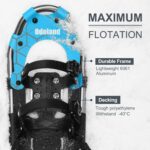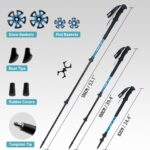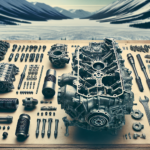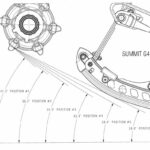Imagine it’s the middle of winter, with temperatures dipping below freezing, and you are all set to ride your snowmobile, but suddenly, disaster strikes – your snowmobile belt needs replacing! Fear not, the article titled “How to Replace a Snowmobile Belt?” is exactly what you need to get your sled up and running again. Deeply insightful and precise, this guide takes you through an easy-to-follow, step-by-step process, designed to help you replace the snowmobile belt effectively without needing to be an expert mechanic. This way, you can enjoy an uninterrupted winter adventure!
Understanding the Importance of the Snowmobile Belt
A snowmobile belt, also referred to as a drive belt, plays an indispensable role in your snowmobile’s functioning. This seemingly small part makes a significant difference in your snowmobile performance and ride quality. Understanding its importance is crucial to maintaining your snowmobile’s health and ensuring that you enjoy a smooth ride on the snow.
Role of the Snowmobile Belt
The snowmobile belt connects the engine to the drive system of your snowmobile. As the engine revs up, it turns the belt. The belt, in turn, propels the drive system, allowing your snowmobile to move. Therefore, a well-functioning belt is instrumental in smooth operations and power delivery necessary for an enjoyable ride on the snow.
Why Timely Replacement Is Crucial
One of the key aspects of snowmobile maintenance is the timely replacement of the snowmobile belt. Over time, the belt can wear out, stretch, or break. A faulty belt can lead to a reduction in power, damaging the clutch and engine, or, in the worst-case scenario, leaving you stranded in the cold. Therefore, recognising the symptoms of a worn-out belt and replacing it promptly can prevent significant problems.
Identifying Signs of a Worn Out Snowmobile Belt
Worn-out snowmobile belts do not break without warning. There are usually telltale signs indicating it’s time for a replacement. Catching these early can save you from an unexpected belt failure and expensive repair costs.
Unusual Snowmobile Behavior
The first signs of a worn-out belt usually manifest in the snowmobile’s behavior. You may notice a lack of power, unusual noises, or poor performance. The sled might feel sluggish, or it may be difficult to start. These are all potential signs that your snowmobile belt may be wearing out.
Physical Signs of Wear and Tear
You should also regularly inspect the belt for physical signs of wear and tear. These can include cracks, fraying, or chunking (pieces breaking off the belt). Additionally, if the belt has stretched and become loose, it may slip, leading to poor performance.
Choosing the Right Replacement Belt
When your belt begins to show signs of wear, it’s time to look for a replacement. Choosing the right snowmobile belt is crucial to ensure efficient operation and prolong the life of your other drive components.
Understanding the Types of Belts
There are essentially two types of snowmobile belts – Original Equipment Manufacturer (OEM) belts and aftermarket belts. OEM belts are made by the snowmobile’s manufacturer and are designed to meet the exact specifications of your sled. Aftermarket belts, on the other hand, are produced by third-party manufacturers. They can offer improved performance and may have a longer lifespan, but it’s essential to ensure that they are a correct fit for your specific model.
How to Choose the Right Size
Choosing the right size for your snowmobile belt is imperative. A belt that is too tight can cause excessive wear on the clutch and engine, while a loose belt will hamper the snowmobile’s performance. Refer to your snowmobile’s manufacturer manual or consult with a professional to ensure you get the correct size.
Considering the Brand and Quality
The brand and quality of the belt also matter. A poor-quality belt can cause premature wear and damage to your sled. It is always safer to stick with reputable brands known for their quality and durability.
Gathering Necessary Tools for Replacement
Before you begin the belt replacement process, gather all the necessary tools needed for the job. This will save you time and make the process go smoother.
Tools Needed for Removal of Old Belt
For the removal of the old belt, you will primarily need a wrench to de-tension the clutch. A flashlight may also come in handy for better visibility during the process.
Tools Needed for Installation of New Belt
To install the new belt, along with a set of wrenches, you might also require a pry bar to help maneuver the belt into its place and a belt tension gauge to check for correct belt tension.
Preparation Before the Belt Replacement
Proper preparation before the snowmobile belt replacement can make the process significantly easier.
Safety Precaution Measures
Always disconnect the spark plug before starting any maintenance work on your snowmobile. This will prevent accidental starts that can cause injury. Additionally, using gloves can give you a better grip and protect your hands.
Positioning the Snowmobile for Easy Access
Position your snowmobile on a flat surface and ensure it is stable. The working area should be well-lit and have enough space to work comfortably.
Removing the Old Snowmobile Belt
Once you are set up, the next step is to remove the old belt.
De-tensioning the Snowmobile’s Clutch
First, you need to de-tension the snowmobile’s clutch using a wrench. This will allow the belt to be slid off the clutch much easier.
Carefully Taking off the Worn Out Belt
Now, carefully remove the worn-out belt from the clutch. Be sure to note its positioning as this will help when installing the new belt.
Inspecting the Drive System
With the old belt removed, it’s a good time to inspect the drive system for other potential problems.
Checking for Other Potential Issues
Carefully inspect the clutch and the adjacent components. Look for any unusual signs such as cracks, leaks, or damage. Identifying and addressing these issues promptly can save you from future headaches.
Cleaning and Maintaining the Clutch System
While you have access to the clutch, it’s a good idea to clean it from accumulated dirt and mud. Regular cleaning can extend the life of the clutch system and improve performance.
Installing the New Snowmobile Belt
Installation of the new belt is essentially the reverse process of its removal.
Proper Placement of New Belt
Fit the new belt onto the clutch, following the same positioning as the old one. Ensure it sits correctly on the pulleys.
Ensuring Correct Tension and Alignment
Use a belt tension gauge to ensure the new belt has the correct tension. It should not be too tight or too loose. The alignment should also be checked to make sure the belt sits correctly on the clutch pulleys.
Post-Installation Checks
After the installation of a new snowmobile belt, it’s crucial to perform some checks to ensure everything is in order.
Assessing Belt Rotation
Start your snowmobile and observe the new belt’s rotation. It should run smoothly without any wobble or noise. If there is an issue, look for misalignment or incorrect tension.
Re-adjusting as Necessary for Optimal Performance
Re-adjust the belt as necessary to achieve the correct alignment and tension. This will ensure optimal performance and prolong the life of your new belt.
Maintenance and Care for Longer Belt Life
Proper maintenance and care can significantly extend the life of your snowmobile belt.
Routine Checks for Wear
Regularly inspecting the belt for signs of wear can give you a heads-up when it’s time for a replacement. This allows you to replace it on your terms, rather than waiting for it to fail unexpectedly.
Best Practices for Extending Belt Life
Avoid rapid starting and stopping, which can put excessive strain on the belt. Try to keep your sled’s speed steady and smooth. Regular cleaning of dirt and mud from the belt and clutch can also lengthen the belt’s life.
In conclusion, a snowmobile belt is a critical component of your sled that requires proper care and timely replacement. By understanding the signs of a worn-out belt, choosing the right replacement, and performing regular maintenance, you can ensure a smoother ride and extend the life of your snowmobile.
- What Snowboard Bindings Should I Get? - January 23, 2024
- What Size Screws For Snowboard Bindings? - January 23, 2024
- How To Snowmobile On Water? - January 23, 2024










